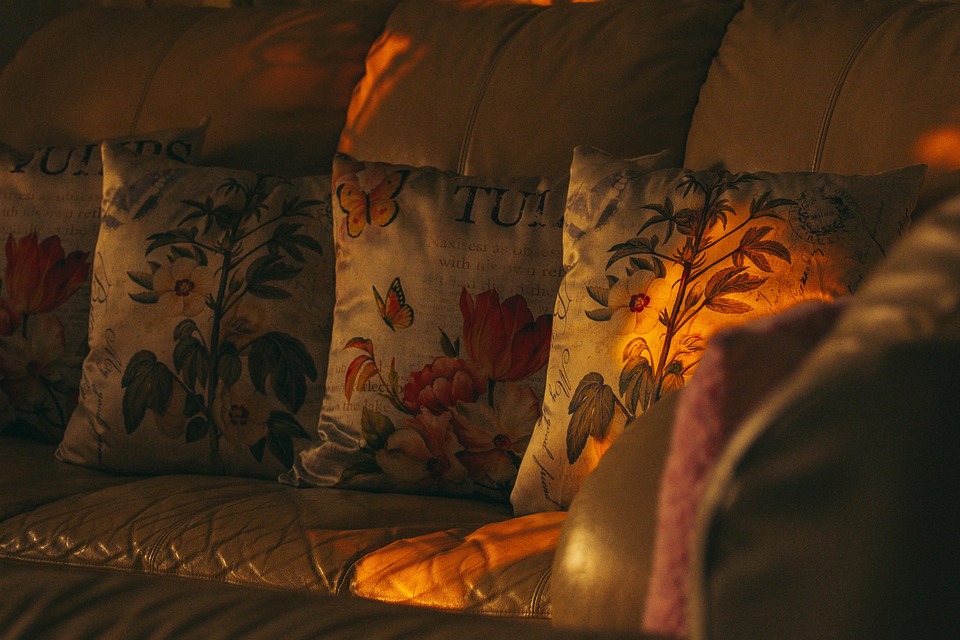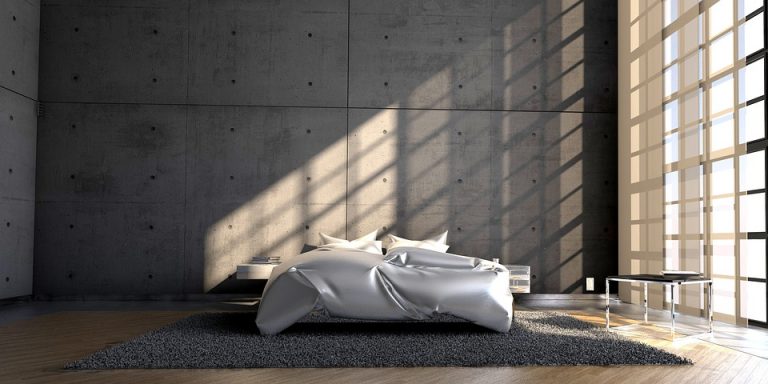Cozy living room design is the art of making your main room feel like a hug. It’s about temperature, texture, light, and the particular hush that says, you can breathe here. You want a space that welcomes you at the end of a long day and flexes to hold family, friends, quiet mornings, and movie nights. That matters because your living room shapes your habit of rest, your gatherings, and even your sleep. Get it right and your home works for you.
Contents
- Why Cozy Living Room Design Matters
- Tip 1: Start With A Thoughtful Layout
- Tip 2: Layer Lighting For Mood And Function
- Tip 3: Layer Textures For Immediate Warmth
- Tip 4: Use Color To Calm And Connect
- Tip 5: Bring Nature Inside
- Tip 6: Prioritize Comfortable, Practical Furniture
- Tip 7: Add Personal Touches That Tell Your Story
- Practical Comfort: Heating, Ventilation, And Air Quality
- Small Touches With Big Payoffs
- The Psychology Behind Cozy Choices
- How To Start If You’re Overwhelmed
- Cozy Living Room Design For Every Budget
- Bottom Line
- FAQ
Why Cozy Living Room Design Matters
A cozy room doesn’t happen by accident. It’s intentional, with layers that work together. Neuroscience shows that comfortable environments lower stress markers and improve mood, which is why savvy design uses color, lighting, and ergonomics to help your body relax. I’ll show you the practical moves that make your living room a safe, stylish harbor—without needing a renovation.
Tip 1: Start With A Thoughtful Layout
Don’t shove furniture against the walls because you think you must. Good layout invites conversation and movement. Pull your seating into a group that faces each other; create a small pathway so feet don’t trip over ottomans; leave a reading nook with a lamp and a comfy chair. Think about how you use the room: TV focus, social focus, or a multi-use space. When your plan honors your habits, the room feels naturally cozy.
Create Zones With Purpose
Zones keep chaos from creeping in. A reading corner, a TV cluster, a kids’ craft table—each one needs a simple anchor like a rug or light. Anchoring makes small spaces feel intentional instead of cluttered, and it signals your brain where to relax.
Tip 2: Layer Lighting For Mood And Function
Lighting is mood magic. Overhead bulbs alone make rooms feel flat and harsh. Combine three types: ambient light, task lights, and accent lights. Use dimmers so brightness follows the hour and your energy. A warm-toned lamp by a chair does more than illuminate; it asks you to sit down and stay.
Why Warm Light Works
Warm light mirrors sunset hues that encourage rest. Harvard experts note how evening light impacts melatonin and sleep patterns, so soft, warm bulbs help your body wind down. Swap cold, blue lights for warm LEDs in living rooms where you unwind.
Tip 3: Layer Textures For Immediate Warmth
Texture is the fastest route to comfort. Smooth leather, nubby wool, linen slipcovers, a velvet pillow—each touch brings a different kind of warmth to your hands and your eyes. Layer a rug over hardwood, add a knitted throw over the sofa, and scatter pillows in different fabrics. Textures tell your senses this room is designed for lingering.
Choose Fabrics That Live With You
Pick durable fabrics for daily use and softer pieces that you can swap seasonally. Performance textiles resist stains and still look lovely. Mix natural fibers like wool and cotton with one plush piece for contrast.
Tip 4: Use Color To Calm And Connect
Color speaks before words do. Neutral palettes soothe, but a calm color doesn’t mean boring. Choose a dominant neutral and add two accent colors to weave through pillows, art, and accessories. Blues and greens are proven to reduce anxiety, while warm terracotta or soft mustard read as inviting. Paint is one of the quickest investments that changes everything.
Balance Bold With Grounding Neutrals
If you love a bold accent wall, ground it with muted furniture and soft textiles. Balance keeps the eye resting and the room feeling collected.
Tip 5: Bring Nature Inside
Plants are not decoration; they are wellness tools. Studies published in reputable journals show that indoor plants can reduce stress and improve air perceptions. A fiddle leaf fig, a snake plant, or a modest succulent arrangement gives oxygen, texture, and life. Even cut branches in a vase add softness and seasonal interest.
Low-Maintenance Options That Still Feel Luxe
If you travel or forget watering, choose resilient species like the snake plant or pothos. Place plants where they get the right light, and let them anchor a corner rather than sit forlornly on a side table.
Tip 6: Prioritize Comfortable, Practical Furniture
Comfort beats trend every time. Choose a sofa that supports your back and invites long conversations. Seat depth matters—deeper for lounging, shallower for upright sitting. Look for furniture with replaceable covers so splashes and stains don’t force you into a full replacement. A smart coffee table with storage makes tidying fast and keeps surfaces clear, which in turn keeps your mind calmer.
The Right Scale Matters
Overly large furniture in a small room feels oppressive. Choose pieces that speak the same visual language and leave breathing room between them. Spaciousness is a subtle ingredient of coziness.
Tip 7: Add Personal Touches That Tell Your Story
Your home should whisper your history. Display a handful of framed photos, a travel find, your favorite books, and a small cluster of meaningful objects. Too many tchotchkes read as clutter; a carefully edited set tells a story and sparks warmth. Make a ritual of rotating items seasonally to keep the room fresh without starting from scratch.
Curate, Don’t Hoard
Edit ruthlessly. Keep surfaces functional and sentimental. When every object earns its place, the room breathes and you feel held by it.
Practical Comfort: Heating, Ventilation, And Air Quality
Cozy isn’t just softness; it’s the right temperature and clean air. The EPA explains how indoor air quality affects health, so keep vents clean, use an air purifier if you live in a polluted area, and open windows when possible. A programmable thermostat helps keep consistent warmth without wasted energy. These small systems make your space reliably comfortable all year long.
Seasonal Swaps That Work
Switch throws and pillow covers with the calendar. Lighter linens in spring, chunkier knits in winter. These swaps are inexpensive but deliver big sensory changes. Your living room becomes season-aware without a single contractor.
Small Touches With Big Payoffs
These are the tiny decisions that make people sigh in relief. A basket by the sofa for magazines and remotes. A place for shoes and umbrellas near the entry. A tray for keys that keeps counters clear. These small systems reduce friction in daily life and keep the room feeling under control.
- Soft area rugs underfoot.
- Candles with subtle scents.
- A small speaker for gentle background music.
Each element asks your nervous system to relax.
The Psychology Behind Cozy Choices
Design isn’t decoration; it’s behavior shaping. Environmental psychology research links clutter to cortisol spikes, and tidy, well-lit rooms to improved mood and better socializing. When you design a living space that reduces stressors and celebrates comfort, you change how you and your house behave together. That’s real power.
How To Start If You’re Overwhelmed
Begin small. Pick one corner and finish it. Replace harsh bulbs with warm LEDs. Add one rug and a throw. Live with it for a month and observe. Once one zone is working, the rest will follow. The goal is steady progress, not perfection.
Cozy Living Room Design For Every Budget
You don’t need expensive pieces to get comfort. Secondhand shops, online marketplaces, and thrifted frames become bespoke with a little elbow grease. Paint is affordable and transformative. Swap pillow covers, add a lamp, and change the layout. Small, smart purchases beat one big, wrong investment every time.
Bottom Line
You can shape a room that welcomes you every day. Cozy living room design is a mix of practical choices and tender details: the right layout, layered lighting, warm textures, natural elements, reliable HVAC and air quality, and personal touches. Start where you live, edit what you don’t need, and add what comforts you. When your environment supports rest, your life follows.
Be kind to the process. Make one change this weekend and enjoy the feel.
FAQ
How Can I Make A Small Living Room Feel Cozy Without Cluttering It?
Edit for essentials and choose furniture that fits the scale. Use a single rug to anchor the seating, add vertical storage to free up floor space, and bring in warm lighting instead of many accessories. A few curated objects feel intentional, not crowded.
What Colors Help Create A Cozy Atmosphere?
Warm neutrals and muted jewel tones work well. Soft greys, cream, warm beige, and accents in deep green or terracotta help the eye relax. Use color in textiles and art so you can change it if the mood shifts.
Are Indoor Plants Really Helpful For Comfort?
Yes. Plants add texture, absorb sound slightly, and signal life. Research shows exposure to nature reduces stress, and even low-maintenance houseplants support that effect. Choose plants that suit your light and your schedule.
How Do I Balance Cozy With Style?
Choose quality basics and add trendy details in small doses. Invest in a durable sofa, then update cushions, throws, and accessories seasonally. Cozy and stylish are not opposites; they’re a marriage of comfort and taste.
References
EPA guidance on indoor air quality explains how ventilation and air quality affect health and comfort (http://www.epa.gov/indoor-air-quality-iaq).
Harvard Health Publishing discusses light, sleep, and the benefits of warm lighting in evening routines (https://www.health.harvard.edu).
The National Center for Biotechnology Information hosts studies on how plants and biophilic elements can reduce stress and improve perceived air quality in indoor spaces (https://www.ncbi.nlm.nih.gov/pmc/articles/PMC5580555/).
Mayo Clinic resources offer practical health advice related to sleep and environmental factors that inform comfortable home design (https://www.mayoclinic.org).








